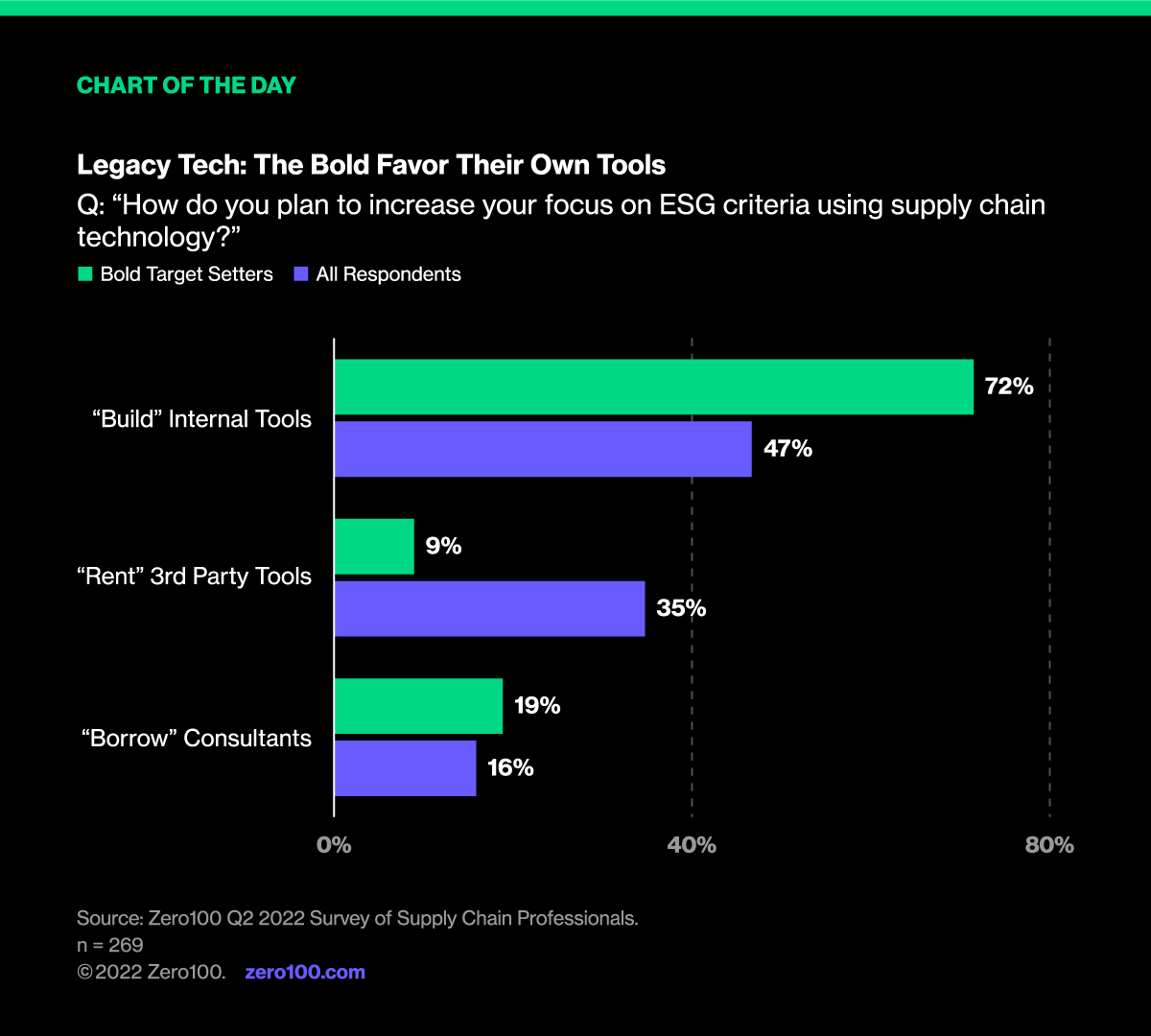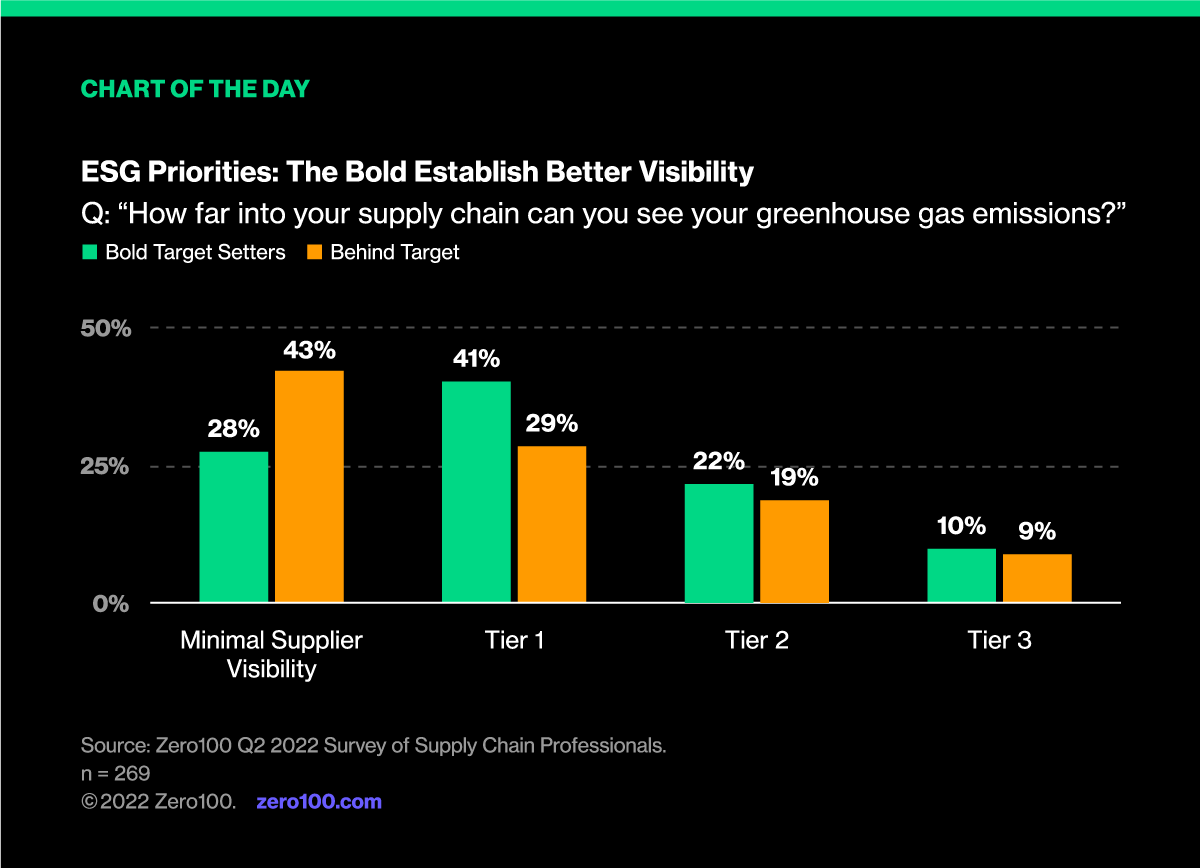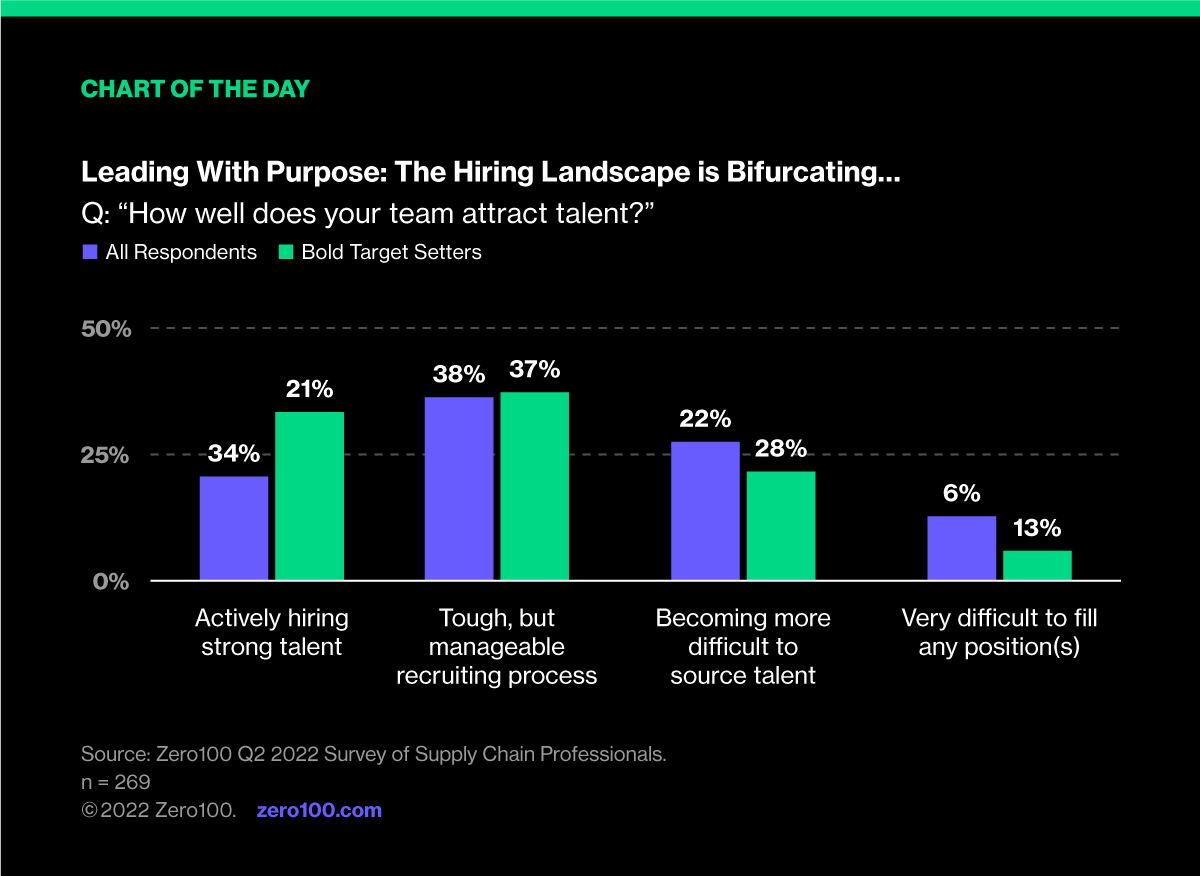
New Data Tool: Explore the Latest Zero100 Community Survey Results
Zero100’s key findings from our latest Supply Chain Community Survey are now available for review. Our new data visualization tool helps explore what organizations accelerating through early Net Zero targets are doing differently with regards to Digital tools, ESG priorities, and People strategies.
Hot Off the Press...
In our continuing inquiry into the mega-trends that underpin Zero100's core mission, we designed our latest Community Survey to explore three critical, inter-related questions:
- Do you have the right Digital tools?
- Do you have the right ESG priorities?
- Do you have the right People strategies?
In Q2 2022, we asked nearly 300 supply chain professionals over 40 questions aligned to these three themes. Each respondent was required to answer every question, enabling detailed cross-tabulation of their responses. All told, the survey group spanned 18 discrete industries and a diversity of functional roles that skewed towards VP+ level with regional or global responsibilities.
After cutting the results by persona, role, seniority, industry affiliation, company size, etc. – one filtering question stood out in its "domino effect" on every other question that followed. Namely: When does your company plan to reach net zero carbon?
While the majority of survey respondents believe their organization will reach this community goal by 2050, 20% report they will fail to hit this critical deadline (or never achieve climate neutrality in principle). Meanwhile, nearly the same proportion (19%) believe they hit this target early – by or before 2030. We believe these "Bold" target setters merit our attention and further scrutiny to parse exactly what they are doing differently with regard to investments in Digital, ESG, and People. What allows them to project such confidence and accelerate through early milestones on the path to decarbonization?
Takeaway #1: Lean Into Building Your Own Tech
The majority (57%) of respondents believe traditional Enterprise Resource Planning (ERP) will be phased out within a 5-year window. In many cases, this is not out of choice, but because technology partners (including SAP) have already announced the end of support for legacy solutions by 2027. In terms of what comes next, the Bold companies are more likely to report building internal tools that are fully customized to their specific needs and applications – versus configured to fit broad, general use cases.

Takeaway #2: Walk the Talk on ESG Criteria
We asked survey respondents where they were increasing versus decreasing their focus on nine competing ESG criteria. Bold companies are consistently increasing prioritization of the four Environmental criteria (i.e., Water Conservation, Carbon Reduction, Plastic Reduction, and Water Conservation) by decisive +30-50% margins.
Digging deeper into the data, it becomes clear that the bold cohort does not have more willpower or desire to advance these criteria over peers. They are simply advantaged in one important regard. They are quickly reducing a chronic and widespread lack of visibility into Tier 1-3 supply chain partners – and thereby enabling better insights into indirect Scope 2-3 emissions that do not originate from company-owned or controlled resources.

Takeaway #3: Fight the War for Talent with "Purpose"
Hiring is tough right now. In fact, 80% of the respondents use “Tough,” “Difficult,” or “Impossible” to describe the current recruiting climate. Not so with Bold target setters – a third of which report they are actively hiring strong talent. The comparative lack of headwind here is less about any cohort's career portal or ability to market better to the values shared by the current applicant pool. The survey data further suggests the same set of bold companies appear to also be over-investing in the development and mentorship programs required to not only attract – but retain strong talent in a tight labor market.

Implications
In summary, reviewing where and how the Bold companies setting aggressive net zero carbon goals differ from the pack proves instructive. In so doing, we identify three potential solutions to overcome critical risks aligned to Digital, ESG, and People:
- Prioritize Customization vs. Configuration in New Tech Investments
- Invest in N-Tier Visibility to Combat ESG Inertia
- Demonstrate How New Recruits Will Contribute to Purpose-Led Organizations
Of these, the People risk is paramount to the wider community challenge. If talent naturally gravitates to the organizations that have the best chance of hitting their carbon reduction targets early . . . then consequently, the organizations that are in most need of talent to accelerate progress against stalled goals risk falling further and further behind.
Note: This is a Members Only asset, available only with a Zero100 sign-in credential.